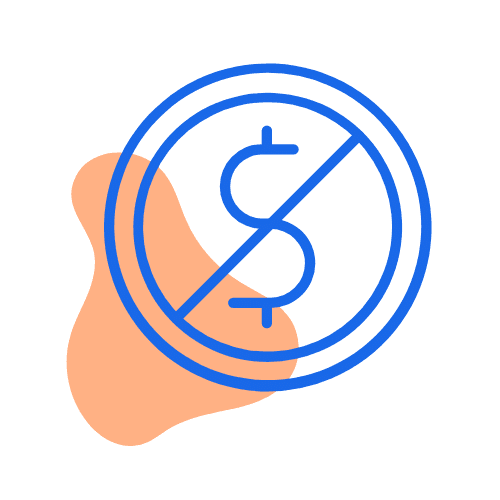
How do personal loans work?
Personal loans give you access to a large sum of money, which you repay over time plus interest.
What is a personal loan?
A personal loan is a lump-sum payment or line of credit, generally between $2,000 and $100,000, that you repay over a period of up to 7 years.
Personal loans are used for a variety of things, but generally, people tend to take them out for those one-off more expensive purchases like a car, paying for a wedding, doing renovations, or paying emergency bills. Personal loans can also be used to consolidate multiple other debts, like from credit cards, into one single debt and repayment schedule.
Since there are so many personal loan products and providers, it's important to shop around to find the best personal loan for you.
How do interest rates work with personal loans?
The interest rate is what you will be charged for borrowing. When you make a repayment on your personal loan, you are actually paying two different figures - the principal and the interest. The principal is your payments that go towards repaying the amount borrowed, and the interest is the extra amount that the lender receives as a fee for lending you the money.
For example, a 10% interest rate on a $20,000 loan will cost you $2,000 a year in interest. However, since you are repaying the principal, by the time you have paid off $5,000 of the loan, your interest will be 10% of $15,000 - meaning your interest payable is now $1,500.
When it comes to interest rates, you need to keep a few things in mind:
- Fixed or variable. You may notice the terms 'fixed' or 'variable' interest. This refers to the type of interest you will be charged. The clue is in the name. With fixed interest, your rate will be fixed for the duration of the loan. This means that your rate of interest will not change, regardless of changes to the market interest rate. A variable rate of interest, in contrast, can mean an increase or decrease in your interest rate based on the market rate. This means that how much you pay in interest can change over the course of the loan term.
- Comparison rate. Most lenders provide a comparison rate, appearing next to the interest rate. The comparison rate, quite simply, is the true cost of your loan and includes the interest rate and any additional fees you have to pay (such as the one-off establishment fee or monthly account keeping fees).
Finder survey: What do Australians typically use personal loans for?
| Response | |
|---|---|
| Vehicle purchase or repairs | 40.28% |
| Debt consolidation | 34.72% |
| Home improvement | 23.61% |
| Holiday(s) | 16.67% |
| Other | 13.89% |
| Moving costs | 12.5% |
| Medical expenses | 10.42% |
| Education expenses | 8.33% |
| Business expenses | 4.17% |
| Special events or celebrations | 4.17% |
| Wedding expenses | 3.47% |
| Legal expenses | 1.39% |
What features come with personal loans?
Personal loans can differ in many ways other than the interest rate offered. While the interest rate is important, you may find that you save money with a higher interest rate loan that has certain features. We've outlined the most common features you'll find in the personal loan market:
Basic features
- Loan amount. This is how much you can borrow. Lenders set their limits based on whether the loan is secured or unsecured. How much of this you're eligible to borrow will depend on your personal circumstances and credit history.
- Loan term. This is how long you have to repay the loan. It can go up to 7 years, or in some instances, 10 years.
- Secured/unsecured. Some personal loans will require an asset as collateral for the loan. Others are unsecured, meaning you don't need to provide an asset to secure the loan.
- Loan use. Personal loans can generally be used for any worthwhile and legal purpose. Some personal loans may come with usage restrictions. For instance, green personal loans which can only be used for green home upgrades.
Extra features
- Extra repayments. You may be able to make extra repayments and reduce how much you owe. This in turn will reduce your interest payments. Some lenders offer free extra repayments, while others may charge, include limits or not allow extra repayments at all.
- Early exit. This is the ability to repay your loan in its entirety before the end of the loan term. Some lenders don't charge a penalty for exiting early, while others may charge a fee.
- Redraws. A redraw facility with your personal loan allows you to withdraw any extra repayments you've made. Some lenders offer free redraws, while others may charge or not offer it at all.
- Repayment flexibility. Some personal loans allow you to tailor your repayments according to your pay. This can be weekly, fortnightly or monthly repayments in line with your pay cheque.
- Mobile app. Some lenders have apps that can help you manage your personal loan from your mobile phone, making it more convenient and easy.
- Fast turnaround times. Some lenders offer quick funding, sometimes within a few hours or same business day. If you want the loan in a hurry, you should look into the lender's turnaround time.

How does the approval process work for personal loans?
Lenders will look at your personal circumstances and your credit history before they are willing to lend you money. Each lender has their own process and criteria, so if you are not approved for one loan, you can still apply for another. It is best to aim to meet the advertised criteria rather than apply for as many loans as possible, as too many applications can reflect poorly on your credit score - making it harder to get approved for future loans.
Generally, if you earn enough money, receive a reliable and regular income, and if your credit score is good, your chances of approval are higher. How much you want to borrow and whether you can afford the loan will also play a role. Lenders will also consider other eligibility criteria, like age (you have to be over 18) and residency (typically they will only accept your application if you're an Australian citizen or permanent resident, although there are some exceptions).
Most applications are now online, which means that you'll have to attach your documentation to the online application. Some documentation, such as bank statements, can also be provided through read-only access to your account. Online applications drastically reduce the time it takes to approve a loan.
Once you've applied, you'll hear back from the lender within the stipulated time frame. Some lenders have quick approvals and can process your application within 60 seconds. Others may take longer.
If you've been approved for the loan, you'll have to sign a loan contract, which the lender will send you. You will receive the funds after you've signed the loan contract.
How do I get paid?
The lender will ask you to nominate a bank account. Once your loan is approved, and the contract signed, the lender will process the payment. How long it takes will depend on the lender's turnaround time. This can range from an hour or two to a few business days. You'll receive all the funds at once, unless you applied for specific loan products such as a line of credit or an overdraft.
What can I use a personal loan for?
Personal loans can be used for a variety of reasons, here are some of the most common uses:
How to apply for a personal loan?
The first step to applying for a personal loan is to choose one. The best way to do that is to compare your options and find the best deal for you.
Make sure you meet the lender's eligibility criteria, and then fill out the application form and provide all the supporting documentation. The lender will assess your application and, if approved, the funds will be sent to your bank account.
You will usually need any of the following to prove your identity:
- 3 payslips
- Bank statements
- 2 years of tax returns (if self-employed)
You may also need any of the following documents:
- Statements from other loan accounts/credit cards
Applying for a car loan requires various documents to have the car verified:
- VIN or chassis number, engine number and registration plate details
- The car dealer's contact information or the seller's contact details if a private sale
- Tax invoice and receipt for the car or purchase price if a private sale
- Your CTP insurance and comprehensive insurance details.
Average personal loan size
According to our consumer sentiment tracker, the average personal loan size is currently $12,394. It's been increasing since June when it was $10,368.
Why compare personal loans with Finder?

We're free
Our personal loan comparison is completely free to use. There are no costs at all for you to use our database to find a better deal. Better still, we regularly run exclusive deals that you won't find on any other site.

We're experts
We've researched and reviewed hundreds of loans as part of our Finder Awards. Our database and tables are always up-to-date and our in-house experts regularly appear on Sunrise, 7News and SBS News.
We're independent
We are independently owned and have a mission to help Australians make better financial decisions. That means our opinions are our own and you can compare nearly every personal loan in Australia (and find a better deal).

We're here to help
Since 2014, we've helped 300,000+ people find a personal loan by explaining your options simply. You don't need to give us any details to use our comparison. We're here to help you make a decision.Frequently Asked Questions about personal loans
Still have questions? We've done our best to answer the most common questions people have about personal loans.
More guides on Finder
-
Personal loan rejection: Reasons and how to avoid it
There are a number of reasons why your personal loan application may be rejected.
-
Guarantor personal loans
If you don't quite meet the criteria for a personal loan, applying with a guarantor can help get your application over the line.
-
What is the minimum income for a personal loan?
Not sure how much you can borrow based on your income? If you're looking for a personal loan, find out how lenders determine how much you can borrow and how to see if you're eligible based on your income.
-
Personal loans for new employees
Just started a new job but need money straight away? You can apply for a personal loan with selected lenders now.
-
Personal loans for self-employed borrowers
Find out what personal loan options are available to you as a self-employed person and how you can be approved.
-
How to Transfer Your Personal Loan to Another Bank
How you can save by switching personal loans.
-
How much is your dog really costing you?
A dog can add a lot of value to your life. Find out the real cost of getting a pet and if you can afford it.
-
Easy personal loans
Not all personal loans come with endless documentation. Some lenders specialise in quick and easy application processes.
-
Loans for casual and part-time workers
Find out your loan options if you're casually employed, or are part time and don't work a full 40-hour week.
Ask an Expert





